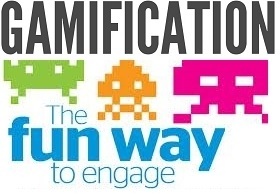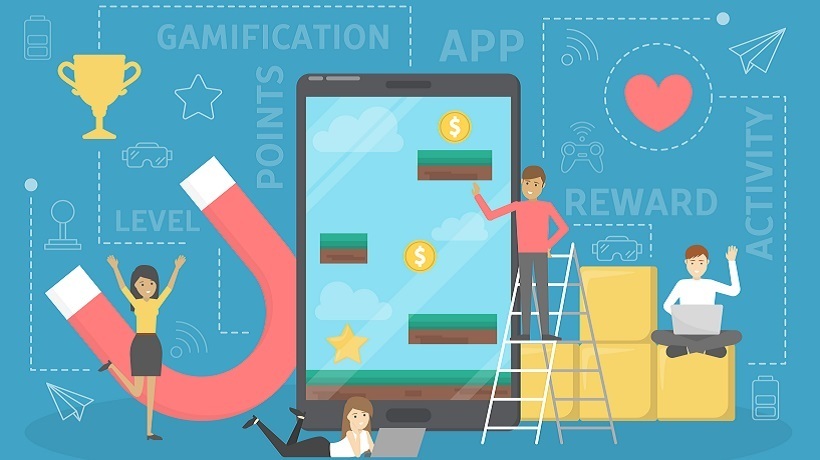Games or Gamification - Can they make better learning experiences?
I meet people who seem to think that if the learner audience is young enough they can’t concentrate on anything which isn’t a game for more than two minutes. Whilst this may seem to be a truism for some youngsters, it’s obviously a simplification and perhaps a slur for most. In fact it’s worse than that, it’s a cop-out which is often used to excuse poor learning materials by blaming any lack of success on the audience rather than the training provider.The reality is challenging however. Younger people from all educational backgrounds have been used to interesting, engaging digital experiences and have quite simply got used to them. If they start work for a large and impressive organisation, then they will expect the induction process to be good and any digital learning assets to be engaging and interesting as well as accurate and informative. But it doesn’t end with ‘young people’. Video gaming has been around for a long time and young people have an inevitable tendency to get older; we are not just taking about a sub-twenty five generation, but more likely a sub-forty year old split. Not only that, a lot of us parents enjoy playing games and have got used to the same standards our offspring have grown up with.
Games or gamification – what’s the difference?
Firstly, for the purposes of this article, let’s draw a distinction between a learning game and a piece of learning which embodies gaming elements. The two are very different both in theory and in the output.A learning or educational gameA learning or educational game is one which seeks to incorporate valid learning objectives into the gameplay to a greater or lesser extent. It will use interesting, engaging, challenging and often repetitive gameplay to encourage the learner/player to absorb and practice a combination of knowledge, behaviors, skills and understanding.Such games can include complex and realistic simulations at one end of the spectrum and colourful animated maths games for children at the other end. They are usually typified by good graphical imagery, sound, movement and the successful ones will capture that magic ingredient of gameplay.GamificationGamification on the other hand refers to a different process and approach. We recognise that certain things make a game fun and encourage you to return to the game, play it, enjoy it and remember it. Games designers study these aspects in detail and aim to reproduce them when creating their games to maximise the chances of commercial success. Suppose we can extract some of those elements and use them to make a learning course engaging, enjoyable and memorable. Let’s look at a few diverse examples of projects I’ve been involved with recently to illustrate the concept.Discovery and explorationA key ingredient of many games is exploring a world and investigating aspects of it. This is a gamification principle which plays to our desire to seek out and explore, find what is around the next corner and satisfy our innate curiosity. A recent example I have been working on is an induction programme for a major international bank (QNB picks CM Group for innovative new eLearning programme). Here we constructed a 3600 photographic representation of the Bank’s head office and surrounding area, around which new starters could move to discover and complete a range of learning assets (such as eLearning courses, PDFs, videos etc). In doing so they explored the common areas, a typical local retail branch and even the main boardroom. The result was fun, memorable and informative. For this particular solution we SCORM tracked the eLearning courses and monitored completion of all the other individual learning assets so that managers could receive full reports of their new starters’ activities. The point here is that we extrapolated a gaming principle and applied it to create a totally new and innovative learning experience.CompetitionLuminosity Motion for Windows 8Let’s take another example. Game players like to compete, either with themselves, their peers or maybe just against the computer. We can use this competitive element from games, understand how it is used and then introduce selected elements of it into learning programmes. Talking to clients I have come across a range of reactions to competition and how it might be implemented. These reactions depend mainly on company culture, but also on individual viewpoints. With this in mind competition has to be used wisely and with sensitivity. Remember the aim is to encourage success rather than highlight failure!A good example of this is a project we’ve just finished for one of the world’s largest software companies based in the US. The project was to provide a wide variety of training and support materials in different digital forms to new managers joining them across the world as part of their extended induction program. Points, trophies and prizes were all used to reward success with competitive leader-boards showing results. This particular project was delivered from our central cloud based Luminosity Reach Learning Management System (LMS) to the new starters using their Windows 8 tablets and phones. This solution made use of a Tin Can (Experience API) Learning Record Store (LRS), recently added to our Luminosity Reach LMS. We used this to track activity within the App and to record details of the points, trophies and prizes allocated. This particular program tapped into social learning elements as well as our urge-to-collect, personal achievement, desire for peer recognition and yes – pure competitive drive.ScenariosPeople love stories and using character or plot driven scenarios within learning materials to engage learner interest and curiosity is a potent way of attracting and then maintaining a learner’s attention. Contrast two approaches to anti-fraud training. The first is a fairly traditional eLearning presentation of the legal framework, a list of things to be alert for, what constitutes fraud, how to spot irregularities and so on. The second delivers the same learning objectives, but does it via a linked scenario “a day in the life of a fraud”. This approach might follows a character with whom the audience can identify, as he or she progresses through a day seizing (or missing) multiple opportunities to spot and prevent a fraud occurring and minimizing any possible adverse impact. Elements of suspense, uncertainty-of-outcome, identifying with the lead character and pressure, can all add to the level of engagement.SimulationsThese can be complex, realistic and believable. They will range from computer software application demonstrations and simulations to much more expensive and specialized immersive simulations covering for example flight or ship operations. Those who create them might argue that at the more realistic end of the spectrum, they are not games but complex training tools – they are of course correct in this, but the rest of us would immediately spot strong similarities to the flight sim game and shoot ‘em ups available on home games consoles. The downside of these is that they can be expensive to produce, and contain a limited number of learning points. However they are invaluable where repetition is used for skill consolidation or where there is a high cost of failure (such as crashing your airliner!). Although I’ve worked on a few complex Defense sector simulations, by far the larger number of applications for this type of training is for software companies such as Microsoft and for large organizations rolling out new systems. Done well, these can provide very powerful up front courseware as well as just–in-time training aids.These are examples only and illustrate some of the options available.Where can or should you consider using games or gamification?The aim is always to deliver educationally effective learning to your audience which is engaging, fun, interesting and memorable. In other words not something that is shoe-horned into the wrong topic area or learner group for the sake of it.Gamified learning tends to be more expensive and time consuming to produce as it often requires more Instructional Design effort and higher media production values. Such solutions are sometimes more technically advanced, which limits the numbers of suppliers able to offer them. This often means that they are more suited to larger student numbers or situations where increased training impact is required.In addition to providing greater impact, elements of gamification can also be effective at increasing learner engagement and helping drive learner adoption – particularly useful for long running training initiatives. The combined elements of discovery, surprise, and competition can all help to stimulate interest and help ensure learners are keen to come back for more. That said, the associated content must also be informative and at its most fundamental, valuable to the learner’s job role – without this, no one is going to want more of the same.I’ve focused so far on various types of eLearning, but of course these gamification elements can be just as valuable in other training medium formats and can be incorporated into wider blended learning programs making a real contribution to learning impact and adding significant interest to the training content.Gamification principles are fairly universal and an understanding of them means that instructional designers can introduce more interesting and compelling elements into even their standard eLearning courses.Some final points about hosting and trackingWith the ubiquity of mobile devices, you should go with a learning solution which avoids Flash and instead delivers the learning resources in HTML5 format, otherwise you are seriously constraining your learners in how they access the learning you offer and limiting its longevity of use.You will also need to consider the way you centrally host, manage and publish your learning materials. If you can, go for a next generation LMS which supports Tin Can (Experience API) and which can deliver content out to mobile devices via Apps (for optional offline consumption as well as traditional online access). SCORM tracking of completion and scores may be adequate but it will give limited data for you to work with. So ideally your gamified learning should also support detailed analytics, an area that Tin Can can help with. This will enable you to analyze patterns, spot potential areas of knowledge deficiency, and help profile your learner’s skill acquisition, which can then be correlated with improved job role performance.ConclusionI like the concept of gamification to help make learning more engaging and memorable. It won’t be right for every situation, but it provides a valuable way to enrich learning resources and make them more impactful. It will demand good teamwork between the Instructional Designer and the technical team and will inevitably need more Instructional Design effort to make it work. However, if it’s done well, then it provides a powerful and effective way to make a real difference to your learners.









